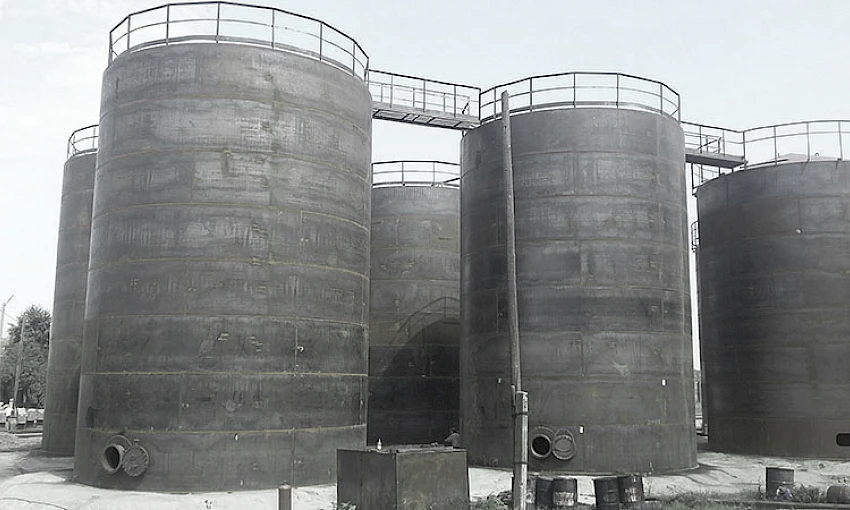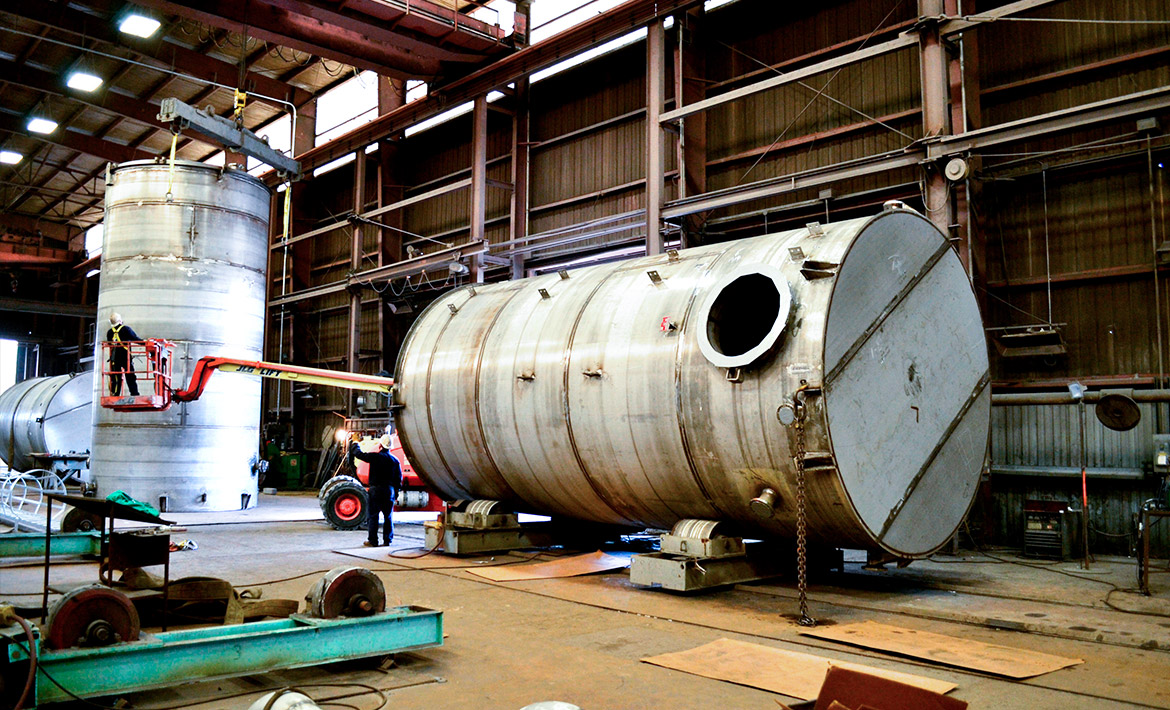Exploring API 650 Welding Inspection Standards for Code-Compliant Pressure Vessels
Wiki Article
Recognizing the Value of Welding Inspection in Quality Control Processes
Welding inspection is a crucial part of quality control in building and manufacturing. It ensures that welds adhere to established requirements, which is critical for architectural honesty. Different evaluation strategies, from visual to ultrasonic testing, assistance recognize flaws early. This positive technique not just stops costly repair work yet also improves security. Recognizing the nuances of welding assessment can reveal its wider effects for market conformity and reputation. API 650 Welding Inspection. What lies underneath the surface of these techniques?The Duty of Welding Evaluation in Quality Control
While welding is an important process in different industries, its high quality and stability pivot substantially on reliable evaluation practices. Welding inspection acts as a secure, ensuring that welds fulfill well-known criteria and specifications. This procedure not just determines problems but likewise examines the total handiwork, thus contributing to the safety and security and long life of bonded frameworks. Examinations are essential to quality control, as they help protect against costly failings and keep compliance with sector regulations. By employing skilled assessors, organizations can boost their operational effectiveness and maintain their credibilities. Furthermore, the understandings acquired from assessments can educate continual renovation, leading to better methodologies and training for welders. Ultimately, welding examination functions as an essential web link in the top quality assurance chain, making sure that every joint is capable and reliable of holding up against the rigors of its desired application. This diligence is crucial for the honesty of framework and the safety of end individuals.Kinds Of Welding Inspections
Welding evaluations incorporate a variety of approaches developed to evaluate the high quality and integrity of welds. These assessments are vital in making sure compliance with sector requirements and requirements. Typical sorts of welding evaluations include aesthetic assessment, which permits for instant recognition of surface irregularities; ultrasonic screening, which uses high-frequency acoustic waves to discover interior defects; and radiographic testing, using X-rays or gamma rays to reveal weld honesty underneath the surface (API 650 Welding Inspection). Additionally, magnetic fragment testing is made use of to identify surface and near-surface interruptions in ferromagnetic materials, while color penetrant testing uses a method for disclosing surface-breaking defects. Each kind of assessment offers a details purpose, adding to the overall quality control procedure. By using a mix of these methods, inspectors can give a complete assessment of welding top quality, eventually making sure the security and integrity of welded structuresUsual Issues Identified in Welding
A variety of typical defects can take place during the welding process, affecting the honesty and performance of bonded structures. These issues consist of porosity, which includes caught gas pockets within the weld, weakening its stamina. Fractures may also form due to fast air conditioning or inappropriate joint style, resulting in prospective failing under anxiety. Incomplete fusion happens when there wants melting of the base steel, causing weak bonds. One more problem, undercutting, entails the elimination of base steel along the weld side, creating a considerable architectural weakness. Additionally, extreme spatter can impact the look and require more cleaning or repair. Finally, imbalance can bring about irregular weld grains, endangering the overall quality. Determining these defects early via correct inspection techniques is vital to ensure the dependability and safety of welded parts, check these guys out ultimately guarding the efficiency of the whole structure.
Benefits of Regular Welding Examinations
Routine inspections play a considerable duty in preserving the high quality and safety and security of welded structures, specifically taking into account the typical defects formerly detailed. These inspections supply a possibility to recognize and correct concerns before they intensify right into major issues, making certain architectural stability. By finding problems early, organizations can minimize repair work costs and stay clear of prospective job hold-ups.Additionally, routine welding assessments boost conformity with sector requirements and regulations, promoting trust fund among stakeholders. This adherence not only secures the firm's credibility yet additionally adds to improved safety for personnel and the general public.
Consistent inspections help with better training and ability advancement for welders, as comments from assessments can direct improvements. Eventually, the advantages of regular welding assessments expand beyond immediate quality control, promoting long-lasting functional performance and integrity in bonded structures.
Finest Practices for Effective Welding Inspection
Applying ideal practices in welding assessment is important for assuring the greatest requirements of top quality and safety and security. First, assessors must be effectively trained and certified, having a complete understanding of welding strategies and materials. Using innovative inspection innovations, such as ultrasonic testing and radiography, boosts the discovery of defects that might not be noticeable to the naked eye. Developing a clear evaluation plan, detailing the requirements and regularity of assessments, assurances uniformity and thoroughness.

Recording all searchings for diligently is important for traceability and accountability. Normal calibration of examination equipment guarantees precision, while preserving a clean and organized workspace decreases the danger of contamination. Furthermore, fostering open communication among employee helps with the sharing of understandings and promotes a society of quality. By sticking to these best methods, companies can significantly improve their welding top quality guarantee processes, ultimately leading to much safer and more dependable items.

Often Asked Questions
What Qualifications Are Needed for a Welding Examiner?
A welding examiner typically calls for qualification from recognized companies, such as the American Welding Society (AWS) or the International Institute of Welding (IIW), together with pertinent experience and knowledge in welding procedures and high quality standards.Just How Typically Should Welding Inspections Be Carried Out?
Welding inspections ought to be carried out regularly, normally at various job stages, including before, during, and after welding processes - API 650 Welding Inspection. The regularity often depends upon project specs, regulatory requirements, and the next page intricacy of the welds involved
What Are the Costs Related To Welding Assessments?
The costs related to welding inspections differ widely, typically ranging from a few hundred to numerous thousand bucks, depending upon elements like examination type, task size, and place, influencing general job image source budgets and timelines.Can Welding Inspections Be Performed Remotely?
Yes, welding assessments can be conducted from another location using sophisticated technologies such as drones, video cameras, and ultrasonic testing. These approaches allow assessors to analyze weld honesty without being literally present, improving performance and safety in various settings.Just How Do Evaluation Outcomes Influence Task Timelines?
Inspection results can considerably impact job timelines by determining issues early, causing necessary rework or adjustments. Hold-ups may happen if evaluations reveal problems requiring resolution, inevitably affecting overall project conclusion and budget adherence.Welding evaluations include a range of techniques made to examine the high quality and integrity of welds. Usual kinds of welding assessments consist of aesthetic evaluation, which enables for instant recognition of surface irregularities; ultrasonic testing, which uses high-frequency sound waves to identify inner flaws; and radiographic screening, employing X-rays or gamma rays to expose weld integrity beneath the surface. Constant examinations promote better training and ability growth for welders, as responses from assessments can direct enhancements. Implementing ideal methods in welding inspection is necessary for guaranteeing the highest requirements of quality and safety and security. Welding assessments must be done frequently, generally at numerous project stages, including prior to, throughout, and after welding procedures.
Report this wiki page